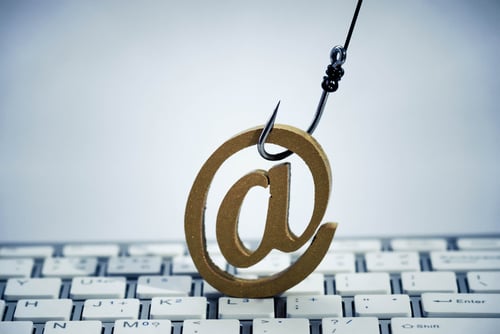
Do you remember the last time you got a phishing email?
Of course you do, because it was probably within the last hour. In fact, phishing has become the most common type of digital fraud, impacting more than 300,000 annual victims, costing over $52 million in personal losses and $2.7 billion in business email compromise losses in 2022 alone.
While some phishing emails are so poorly designed it’s laughable, and they’re quickly sent to our spam folders, if you’re like me, every once in a while you have to force your body to SLOW DOWN and catch yourself before clicking on a link that looks suspicious.
When done well, phishing attempts can be hard to spot if they use proper spelling and grammar, include legitimate high-quality graphics (think the Amazon logo, especially during the holiday season), and are relevant to your current situation.
If it looks like an email from Amazon, and chances are good that I bought something there just this week (or today), I could be fooled into clicking the link without doing my proper due diligence.
It all boils down to one thing … email is NOT a secure channel.
Email content can be easily intercepted. And with so many of us using our email address as our username on hundreds of different sites and re-using the same passwords as well, it wouldn’t take much for a bad actor to access our email inboxes. With the amount of information leaked all over the internet these days coupled with fraudsters preying on our innate desire to quickly move through our inboxes, it’s no wonder phishing has become so common.
While being a victim of a phishing attack in our personal lives is bad enough (computer viruses, identity theft, and financial loss are all real possibilities), the stakes get significantly higher for businesses, with many small- to medium-sized businesses (SMBs) regularly moving five to six digit sums of money, sometimes even higher amounts.
As we all rush to do our jobs and get home to our families at the end of each day, it can be easy to fall prey to a fraudster hoping to capitalize on that sense of urgency with a big payday.
Imagine you’re an accountant at a 10-person legal office, sitting at your desk. It’s 4:50 p.m. on a Friday and you’re trying to wrap up your work before the weekend. You receive an email marked “Urgent” from your firm’s managing partner with instructions to send $50,000 to a new vendor the firm just began working with. You rush to do so, send the money out the door, and all of a sudden, YIKES … ! You just unknowingly paid a fraudster, never to see that money again.
Sounds like a nightmare, right?
It all comes down to the use of vulnerable email servers rather than a truly secure channel.
What if there’s another way? Consider an authenticated communication platform where business staff can exchange messages and make requests in an environment where they know who is on the other end. Even better, this exchange will take place within a trusted financial environment, allowing SMB staff to easily approve payments and transact with the confidence that it’s being done safely.
This is the exact challenge Jack Henry™ aims to solve with Banno Conversations for Business™, a key component of Banno Business™.
Powered by the same digital banking platform used successfully by over 800 clients and more than 10 million end-users on the retail side, Banno Conversations empowers secure messaging between SMBs, financial institutions, and even trusted contacts like accountants, lawyers, or tax advisors.
With an authenticated platform – not the easily spoofed email universe – clients can quickly and securely create an ACH or Wire directly within your digital banking experience. If any help is needed, clients can immediately reach out to you for assistance using that same secure Banno Conversations channel.
Easy, fast, and secure. Now, wouldn’t the world be a better place without all those phishing emails?!
Stay up to date with the latest people-inspired innovation at Jack Henry.
.svg)

Learn more about people-inspired innovation at Jack Henry.
Who We Serve
What We Offer
Who We Are